AMG’s KJV Hebrew-Greek Key Word Study Bible is the most popular study Bible available for detailed word-studies in the original languages. It contains keywords marked with Strong’s numbers and grammatical notations, commentary that focuses on the original languages, and Bible study helps that include Strong’s Hebrew and Greek dictionaries. It’s always been available in hardcover, bonded leather, and genuine leather, but it’s now available in the KJV in brown goatskin (ISBN: 9781617155499, printed in South Korea).
AMG provided this Bible in exchange for an honest review. I was not required to give a positive review, only an honest one. All opinions are my own.
_________________________________________________________
This Bible is available at (includes some affiliate links)
and many local Bible bookstores
_________________________________________________________
Table of Contents
- Video Review
- Construction and Materials
- Typography
- References
- Book Introductions
- Explanatory Notes
- Bible Study Helps
- Concordance
- Maps
- Conclusion
Video Review
Construction and Materials
The cover is dark brown goatskin. The grain looks to be natural. It’s slightly smooth but it does have a grainy texture. It looks and feels elegant. It has an embossed line around the perimeter. It has nothing printed on the front. The spine is noticeably rounded and includes four embossed spine indications and the title, version, red letter, and AMG logo printed in gold. The spine looks a little too busy for my tastes. I’d like to see just the title, KJV, and AMG. This would remove King James Version, Red Letter Edition, and half of the logo.
The liner is a brown paste-down vinyl. I would like to see an edge-lined edition available. Of course, that would increase the price but it would be worth it. The text-block is Smyth sewn. It will stay open in Genesis, but it will need to be used a little bit to break it in.
It has two 1/4″ brown ribbons that are long enough to pull to the corner to open the Bible and brown and white head/tail bands. The overall size is 9.5 x 7.5 x 1.75″ and it weighs 3lbs, 4.8oz.
The paper seems to be in the lower 30 in gsm. It has a slight blue tent, but it’s not as blue as previous editions that I’ve seen. The texture is just rough enough to make it easy to grab and separate the pages. Show-though is noticeable but not overly distracting. It has 4 regular Bible pages in the back for notes.
Typography
The KJV text is presented in a verse-by-verse, double-column format with center-column references and commentary in a single column under the text. The header places the page number in the center and the book name, chapter, and verse numbers in the outer column. It has a one-inch outer margin and about 3/4″ inner margin for notes.
The typeface is about a 9-point and has about a medium darkness. The red letter is also a medium darkness and does sometimes vary to a much lighter shade. The word-count averages around 7 words, but this varies greatly depending on if there are keys or numbers printed with it. Some of the lines have extra space between the words. None have words that are too close. It includes italics for supplied words and section headings with references to parallel passages.
Bold superscript and regular subscript numbers are the Strongs number. You’ll find the definition in dictionaries in the back. Bold superscript numbers include the Strong’s definition and additional information from the Complete Word Study Dictionaries from AMG. Subscript numbers show that the words have a Strong’s definition. Words that are underlined have detailed word studies in those dictionaries. Strings of letters indicate grammatical notations. Keys indicate commentary at the bottom of the page. Multiple numbers show that an underlined word was translated from multiple words in the original language. Superscript Roman numerals show a footnote in the references.
All of this can get in the way of reading and preaching, but it does help in study. I preached from it and was extra careful in reading. I got through it, but I did have to be aware to ignore the extras. My only gripe is that only certain words have Strong’s numbers. Only certain keywords are marked. All of the words are defined in the back, but you’ll have to use external sources to find what the Strong’s numbers are if they’re not identified in the text. With this in mind, this Bible doesn’t take the place of the Complete Word Study Dictionaries.
References
Cross-references are placed in the center column and include the primary verse number in bold. There are quite a lot of references, making this a good Bible for study. Here are some example references to help you compare:
- Genesis 1:1 – John 1:1, 2; Heb 1:10; Ps 8:3; 33:6; 89:11, 12; 102:25; 136:5; 146:6; Isa 44:24; Jer 10:12; 51:15; Zech 12:1; Acts 14:15; 17:24; Col 1:16, 17; Heb 11:3; Rev 4:11; 10:6
- Deuteronomy 6:4 – Isa 42:8; Mark 12:29, 32; John 17:3; 1 Cor 8:4, 6
- Isaiah 9:6 – Isa 7:14; Luke 2:11; John 3:16; Matt 28:18; 1 Cor 15:25; Judg 13:18; Titus 2:13; Eph 2:14
- Matthew 17:20 – Matt 21:21; Mark 11:23; Luke 17:6; 1 Cor 12:9; 13:2
- Mark 11:23 – Matt 17:20; 21:21; Luke 17:6
- Mark 12:29 – Deut 6:4; Luke 10:27
- John 1:1 – Col 1:17; 1 John 1:1, Rev 1:2; 19:13; John 17:5; 1 John 1:2; Phil 2:6; 1 John 5:7
- John 3:16 – Rom 5:8; 1 John 4:9
- Acts 2:38 – Luke 24:47; Acts 3:19
- 1 John 1:1 – John 1:1; 1 John 2:13; John 1:14; 2 Pet 1:16; 1 John 4:14; Luke 24:39; John 20:27
Book Introductions
Book introductions take 2-4 paragraphs and provide insights on the books. They include the author, background, date, setting, culture, themes, major divisions, types of writing, unique features, and key verses. Most of the information is cultural or historical, which I prefer because it helps in understanding the background of the book itself. They’re well-written and they’re excellent for teaching.
Bible Study Helps
The main focus of this Bible is to provide word-study tools to help in proper interpretation. It does this in the form of Strong’s numbers and grammatical codes in the text, and grammatical explanations and Strong’s dictionaries in the back. This brings a level of study that’s normally impossible without having a knowledge of the original languages. They provide the meaning and usage of the key words in the original langauges.
The Hebrew and Greek word-tools in the back take up a good chunk of this Bible. It includes Strong’s dictionaries and additional information from AMG’s Word Study Dictionaries.
- New Testament Grammatical Codes and Notations
- A Guide to Transliteration from Hebrew to English
- AMG’s Annotated Strong’s Hebrew Dictionary
- A Guide to Transliteration from Greek to English
- AMG’s Annotated Strong’s Greek Dictionary
Bookmark – It comes with a bookmark that works as a quick reference to the grammatical codes. It includes instructions on how to read the codes and shows what they stand for.
Explanatory Notes
This is the commentary at the bottom of the page. They include the key symbol and the chapter and verse numbers they correspond to. They cover a wide range of topics and often include insights into the original languages. They also include Scripture references and sometimes refer to other manuscripts. When a definitive answer isn’t given in Scripture it often covers multiple points of view. They’re not on every page and they usually only cover one or two points on a page. The notes seem to be well-written and I like that they cover multiple points of view. I would like to see more notes throughout.
Concordance
The concordance is 162 pages with 3 columns per page. It includes proper names with a pronunciation guide and an explanation of who they are or a definition. It has a lot of entries, making it a good tool for sermon prep and study. Here are a few example entries with their number of references to help you compare:
- Christ – 13
- Christian – 3
- Faith – 125
- Faithful – 49
- Faithfully – 4
- Faithfulness – 8
- Faithless – 4
- God – 74
- Goddess – 4
- Godhead – 3
- Godliness – 10
- Godly – 9
- Praise (n) – 37
- Praise (v) – 23
- Pray – 36
- Prayer – 35
Maps
In the back are 8 pages of full-color maps printed on thick glossy paper. They include territories with borders and dates, distance, topography, cities, seas, rivers, and routes. The maps are from MapQuest.com.
Maps include:
- World of the Patriarchs
- The Twelve Tribes
- The Kingdoms of David and Solomon
- The Kingdoms of Israel and Judah
- Assyrian Empire
- Israel in the TIme of Jesus
- New Testament Jerusalem
- Paul’s Missionary Journeys
Conclusion
The AMG Hebrew Greek Keyword Study Bible in brown goatskin is the nicest version of this edition that I’ve seen. The leather looks and feels elegant. I’d like to see them add an edge-lined liner. Even with a paste-down liner, this is my favorite version of this Bible.
The Hebrew and Greek tools are great for study. It doesn’t mark every word in the text (you’ll need the Complete Word Study Dictionaries for that), but the words it does mark make this a good resource for studying from a single volume. More Strong’s numbers can be added in the wide margins. If you’re interested in the Hebrew Greek Keyword Study Bible, this is the edition I recommend the most.
_________________________________________________________
This Bible is available at (includes some affiliate links)
and many local Bible bookstores
_________________________________________________________
AMG provided this Bible in exchange for an honest review. I was not required to give a positive review, only an honest one. All opinions are my own.

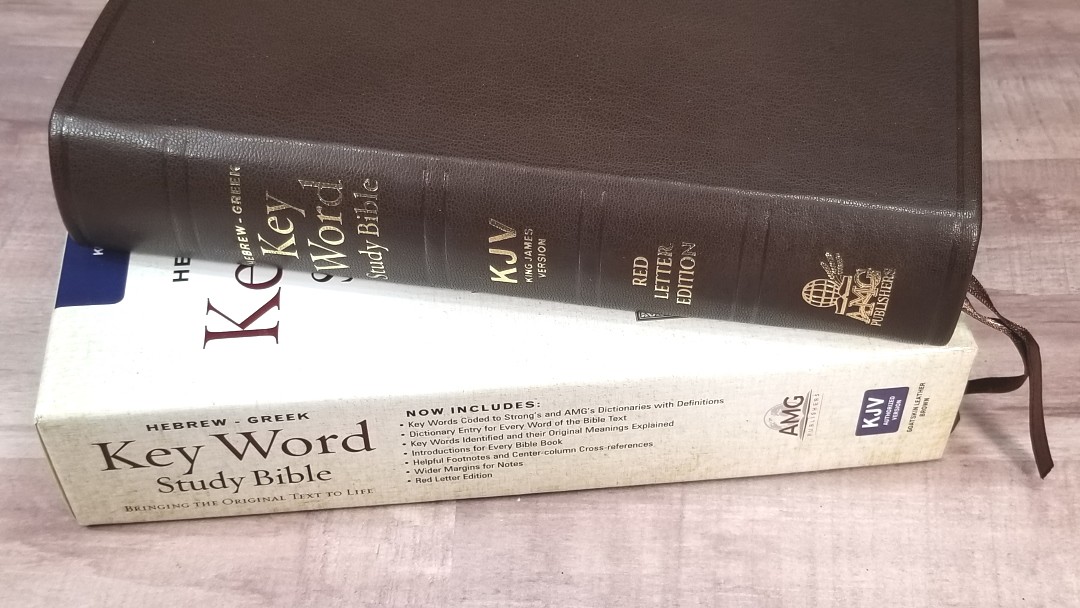


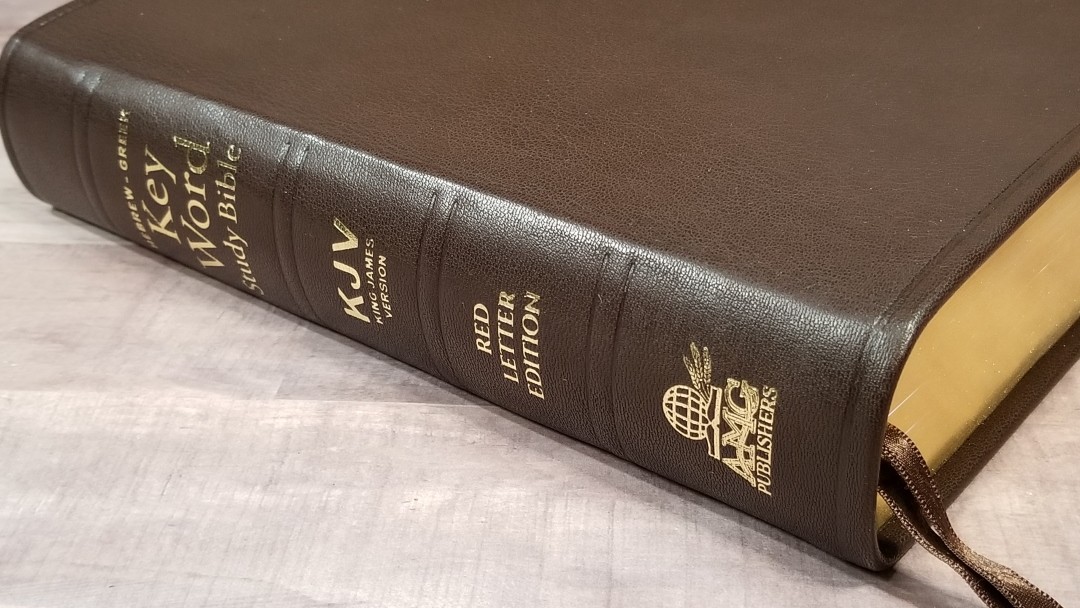



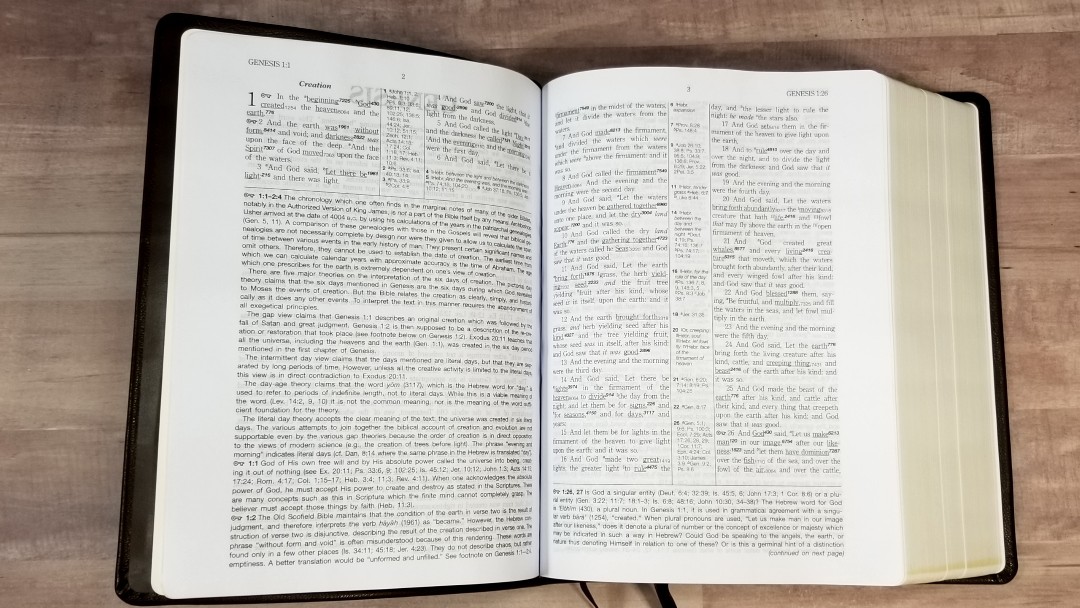
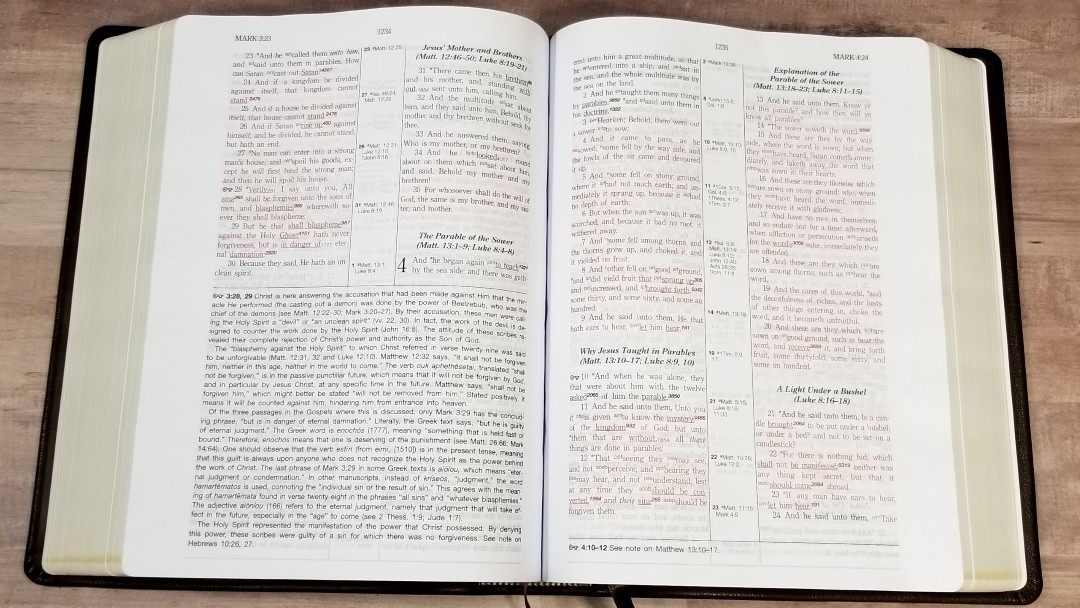


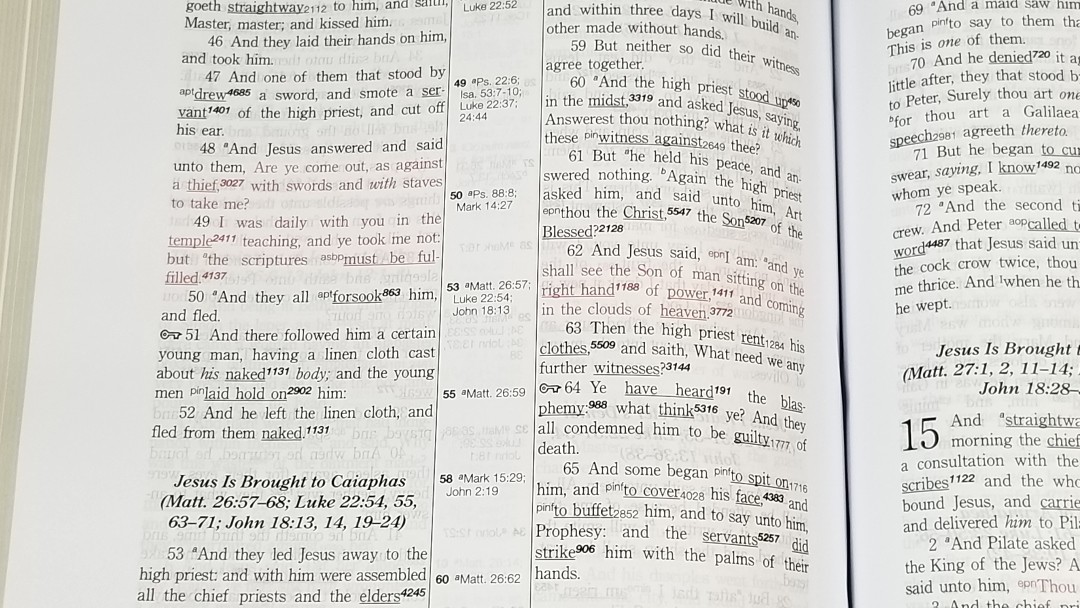
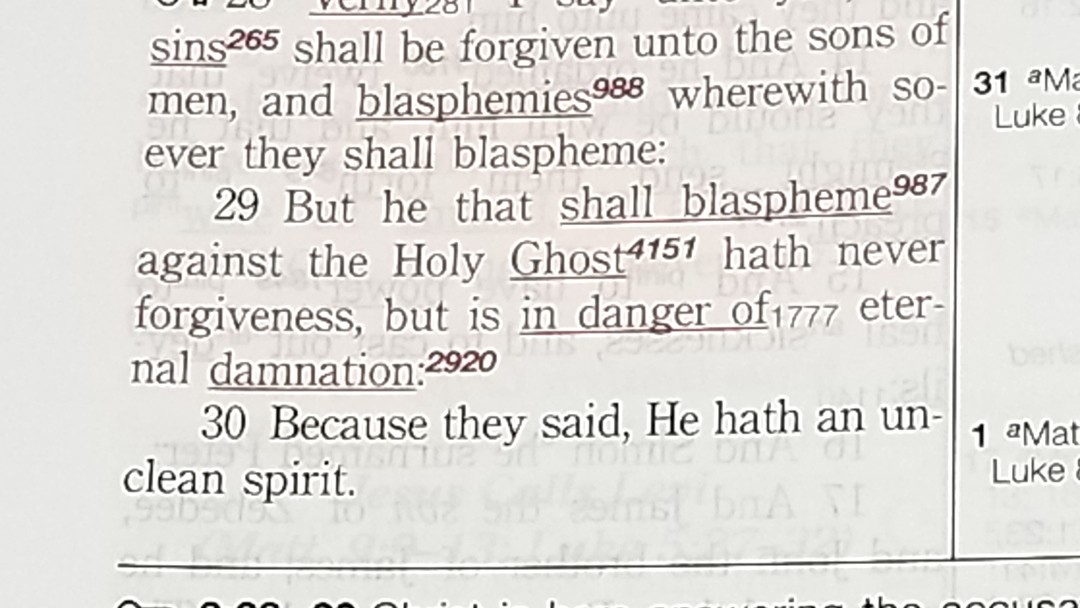


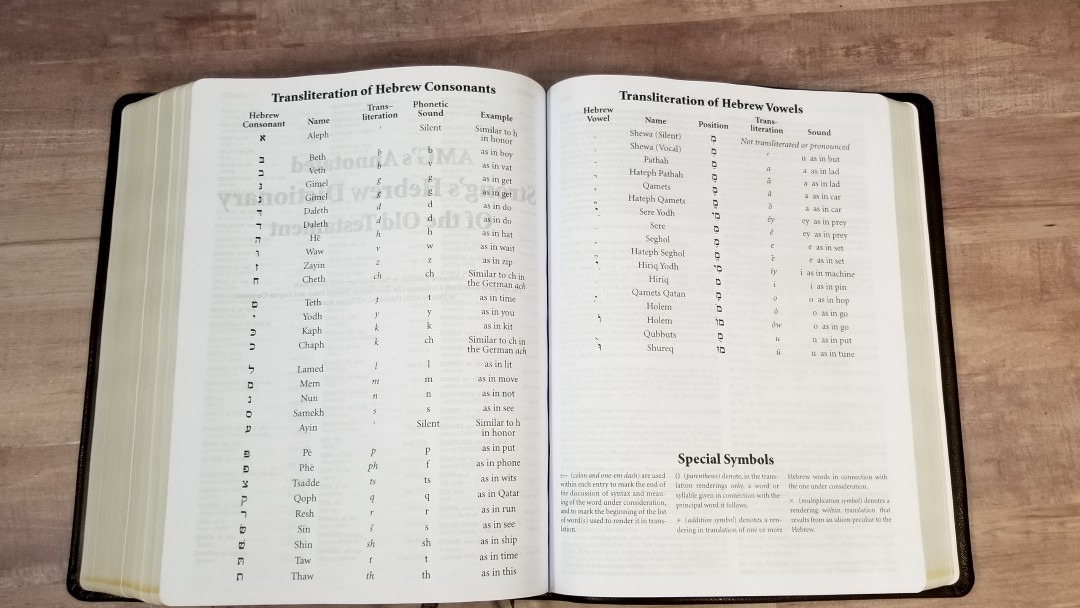


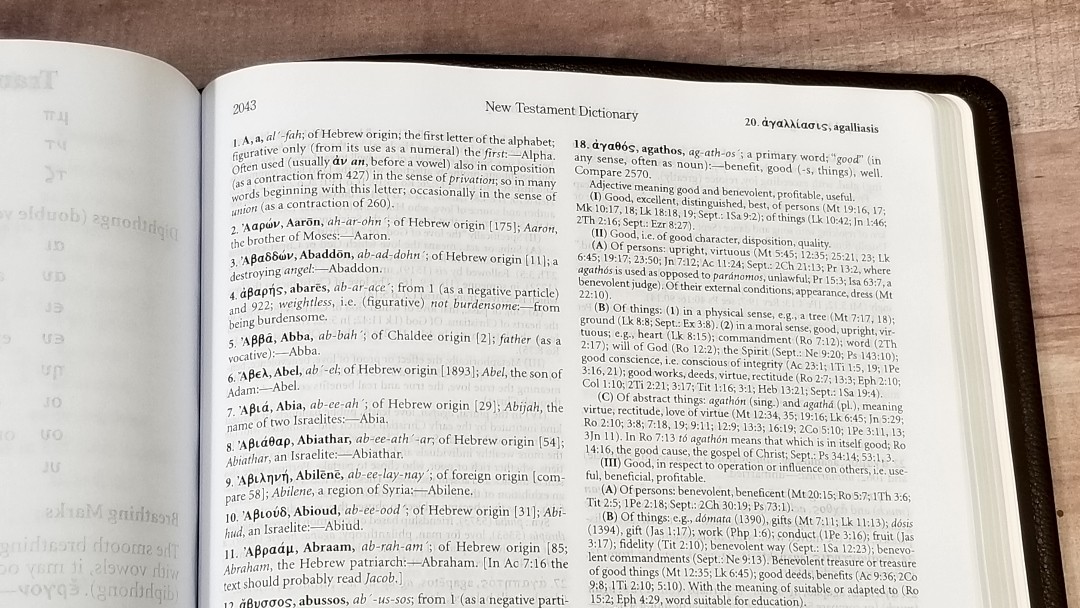
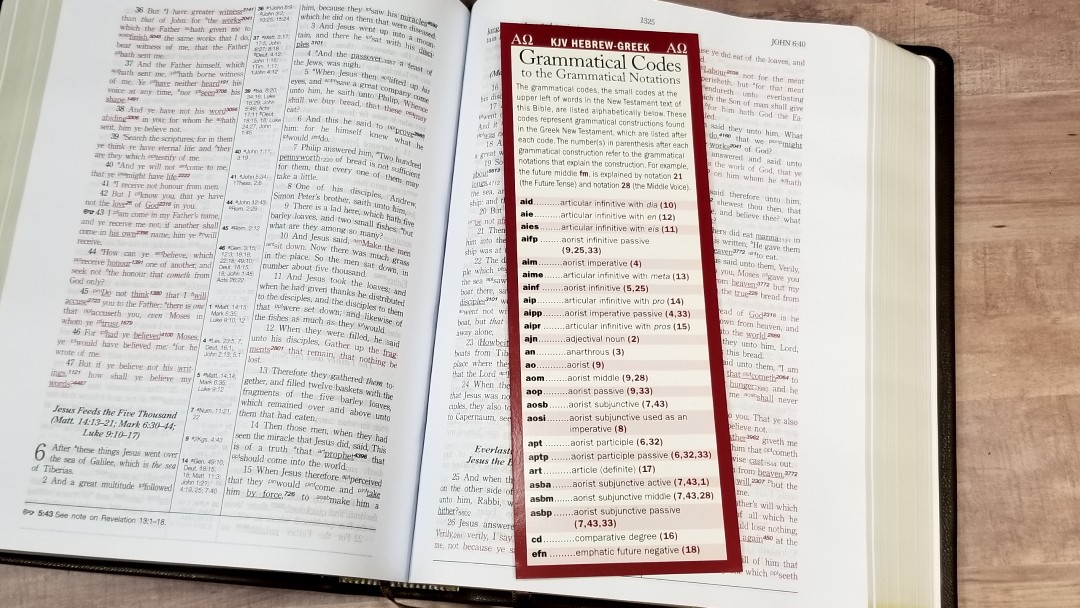
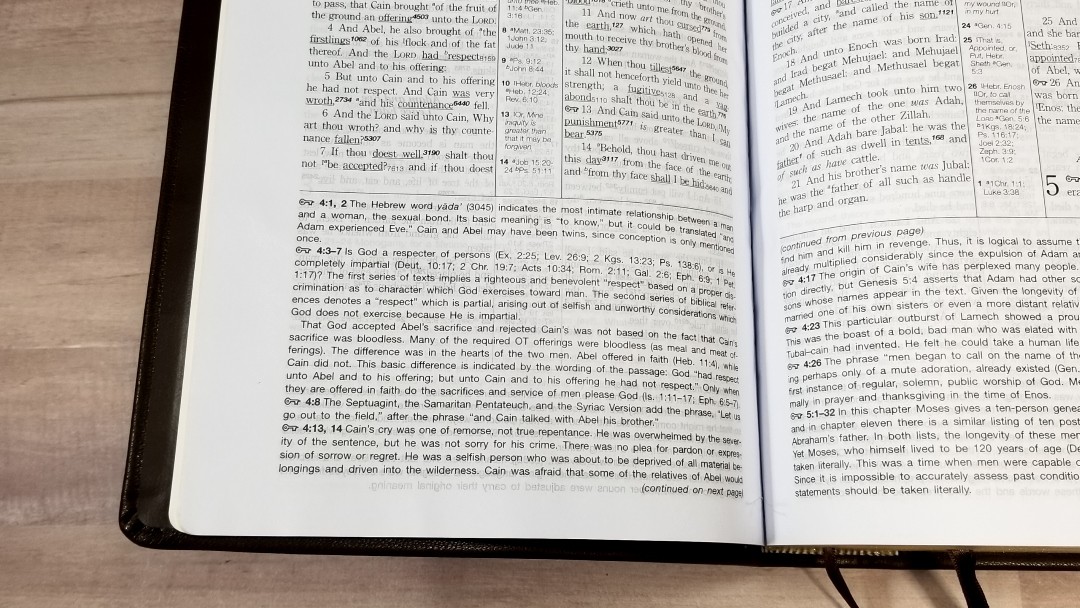

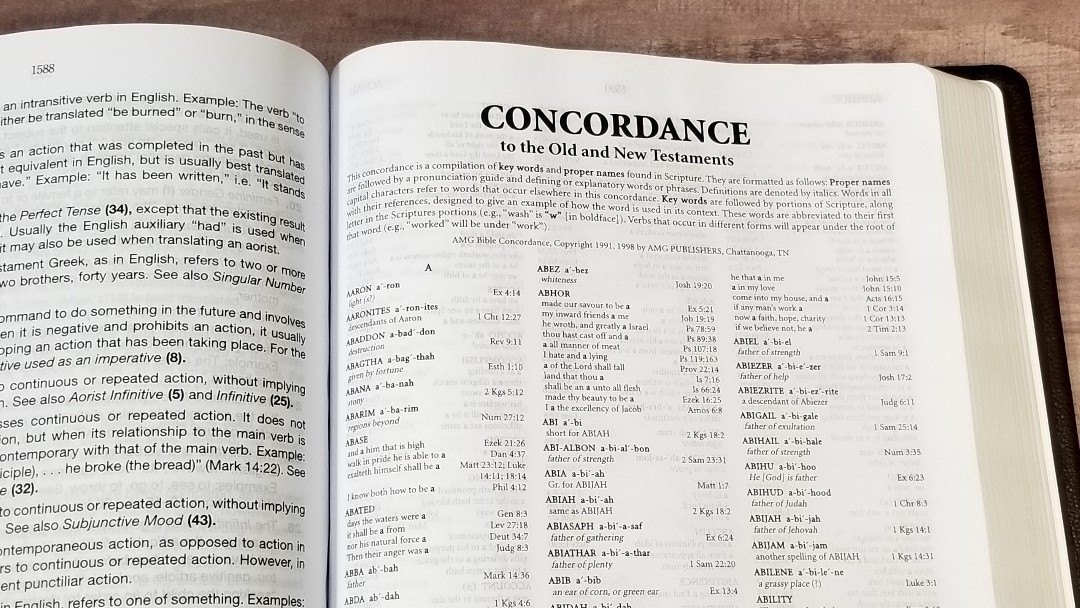

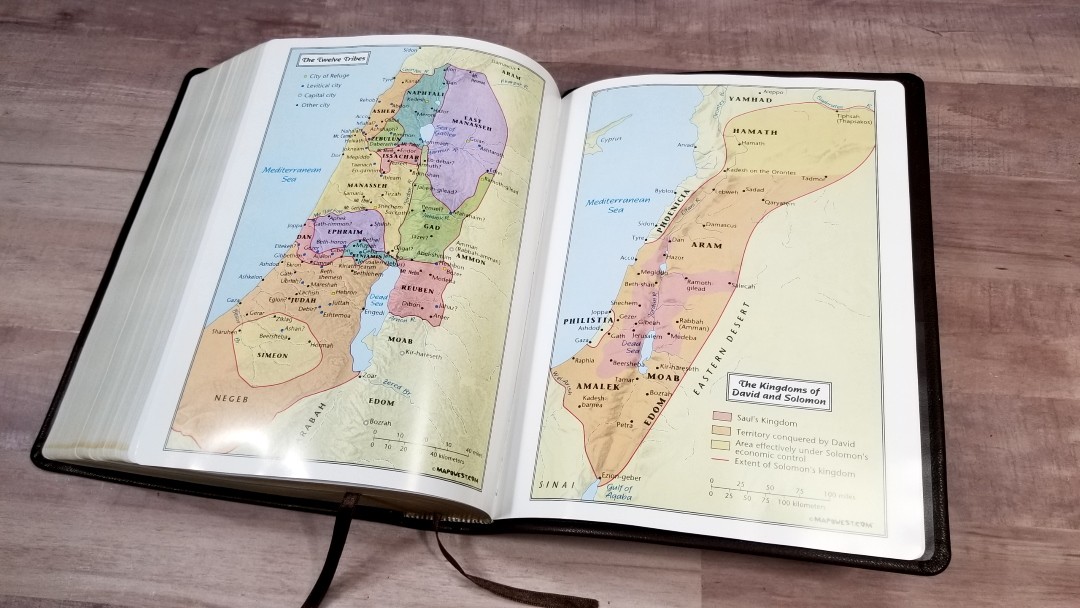

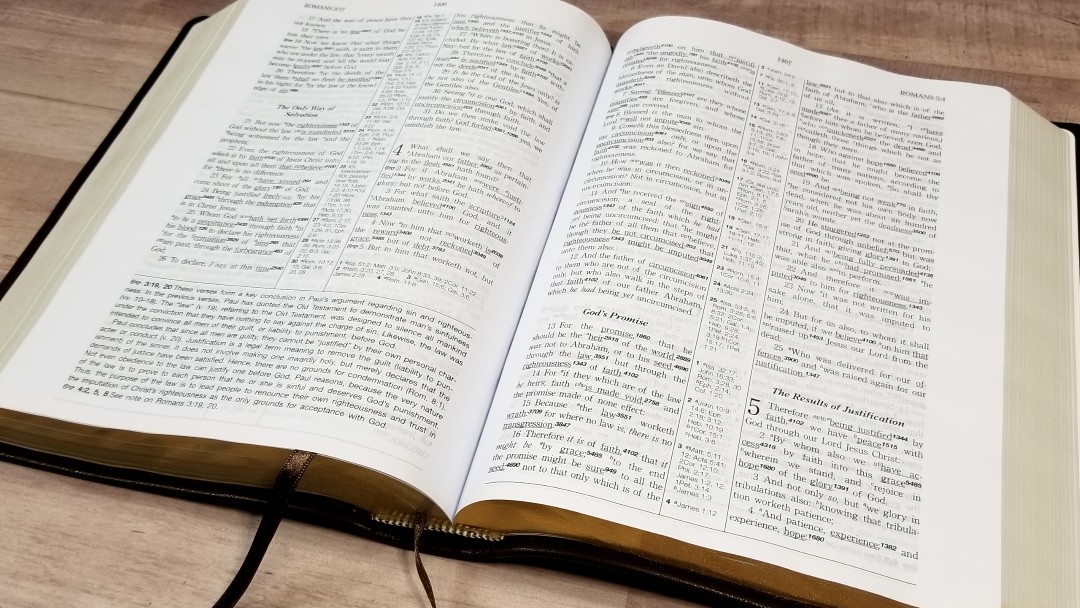



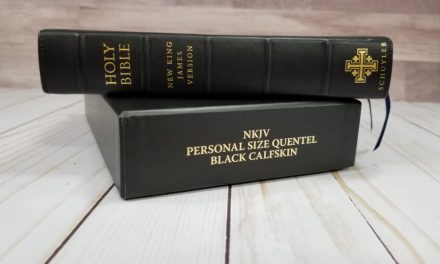
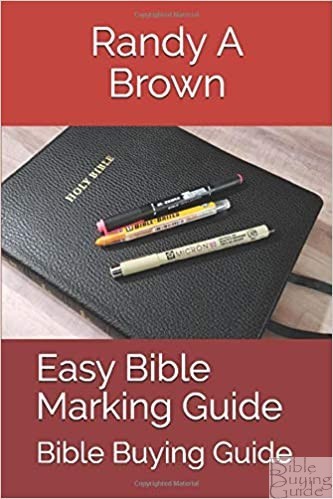
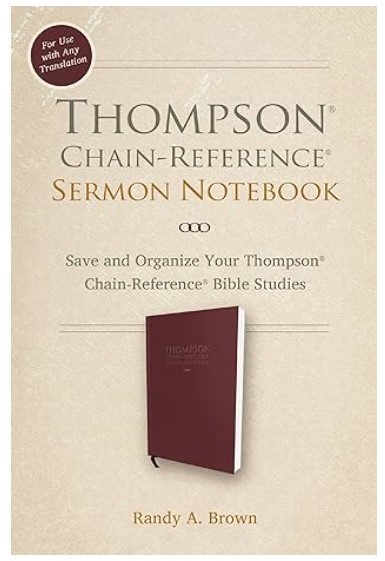



The commentary in these bibles is so biased and inaccurate starting on the first page at Genesis 1:2. The disjunctive vav in verse 2 clearly shows that there is a break in the narrative between verse 1 and 2. Despite what this so-called study bible says, It DOES NOT describe the result of creation in verse 1. Next, the verb “to be” translated as “was” is not a copula. A copula in Hebrew is indicated by a verbless clause as: “and darkness (was) upon the face of the deep.” If that weren’t enough, the Hebrew construction of verse 2 is in the pluperfect form, “had become.” I’m astonished at such a deceptive expostion of the Hebrew here. Notice also the editor doesn’t consider the context of the rest of the Bible, or when Satan and a third of the angels rebelled and fell from heaven. He’s too busy deceiving the reader to agree with him. And this is just the first chapter of Genesis. Avoid this “study bible.”
I am sorry sir, but your Hebrew understanding is wrong. Disjunctive vav never occurs on a verb. Also there really is no such thing in Hebrew as a “pluperfect verb form”, I am wondering if you actually understand Hebrew, because these things are basic Hebrew grammar.
Well, I don’t see where Rk said anything about a disjunctive vav occuring on a verb. So Mr. Jordan’s first objection is false. Second, if Mr. Jordan’s understanding of Hebrew is according to current American Christian academia, he would also be wrong.
Vav + Noun + Perfect Verb = Pluperfect form
According to what grammar does Vav + Noun + Perfect Verb = Pluperfect? According to Jenni and Westermann in the Theological Lexicon of the Old Testament, in their discussion of the verb hyh, for the verb to be rendered as “became” it would have to be in an imperfect form, the verb would precede the noun grammatically, and the clause would have to contain a lamedh preposition. Because the verb is a qal perfect 3fs, the noun subject precedes the verb, and there is no preposition in the clause, “was” is the correct translation.
See also a discussion of this passage in the following:
Robert L. Reymond, “Does Creation 1:1-3 Teach a Creation out of Nothing?” in “Scientific Studies in Special Creation” [Terre Haute, Creation Research Society, 1971, 1990], pp. 9-21. The pertinent discussion is found on pp. 15-16. The late Dr. Reymond was professor of OT at Covenant Theological Seminary from 1968 to 1990, and at Knox Theological Seminary from 1990 to 2008.
I own this bible and I love it as a Preacher it helps me with everything I need
Good day how can i get the key word study bible
Hi. We’ve provided links to online stores in the article. Thanks.